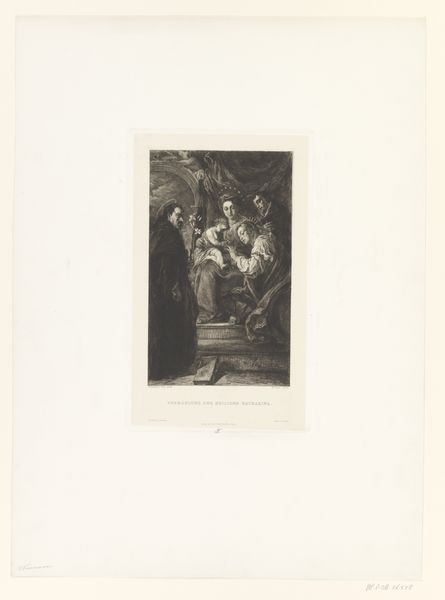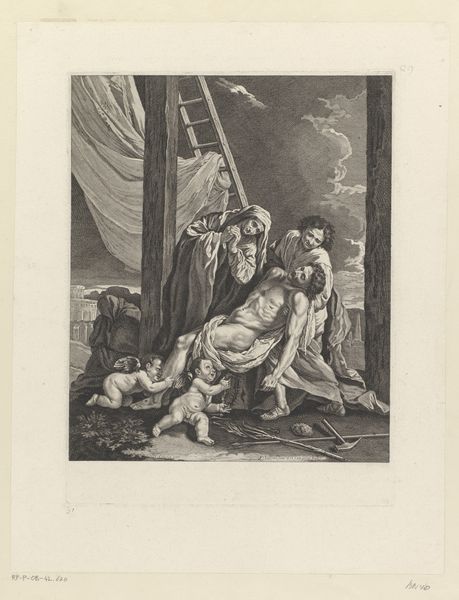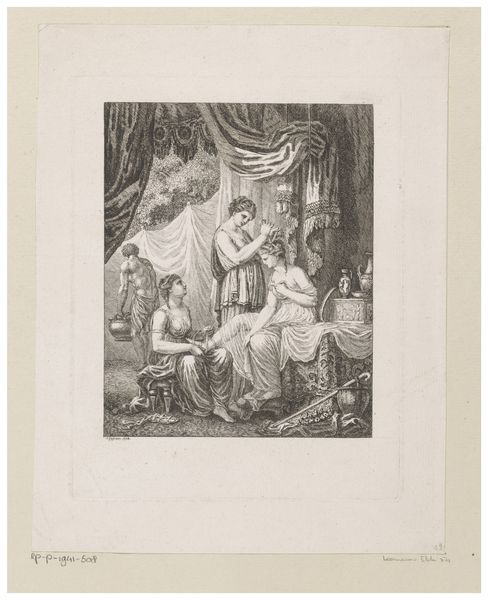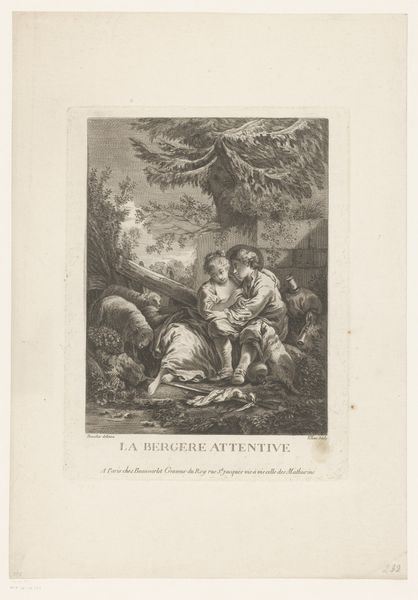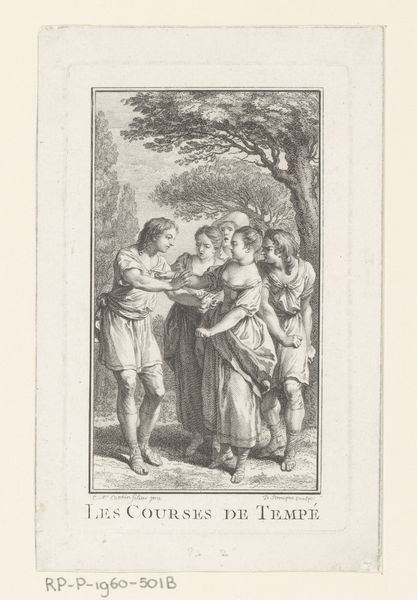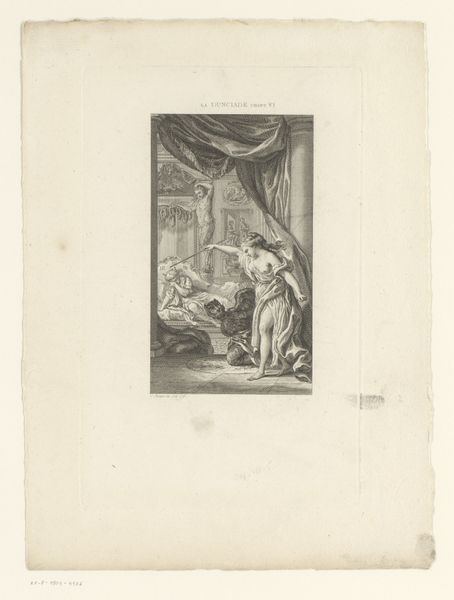
drawing, print, etching, ink, engraving
#
drawing
#
baroque
# print
#
etching
#
figuration
#
ink
#
genre-painting
#
history-painting
#
engraving
Dimensions: height 254 mm, width 175 mm
Copyright: Rijks Museum: Open Domain
Editor: Here we have Jean Baptiste Marie Pierre’s “Adoration of the Shepherds,” likely made sometime between 1723 and 1789. It’s an engraving, and I find it amazing that so much detail, so much texture can come from this reproductive technique. I'm curious, what do you make of this print? Curator: For me, this print speaks volumes about the process of artistic dissemination in the 18th century. Think about it – an engraving is fundamentally a tool for reproduction. It democratizes art, moving it beyond the realm of singular, precious objects accessible only to the elite. The lines, the hatching, these are not just aesthetic choices, they are a labor-intensive means of bringing this scene to a wider audience, right? Editor: So, you're saying that its value isn't necessarily in the image itself, but how it spreads ideas? Curator: Precisely! Consider the socio-economic implications: Who commissioned it? Who bought it? Where did it circulate? This image of piety and humility—think of the shepherd’s coarse clothing and the way his gift is highlighted—it reaches into different strata of society precisely because of its reproductive form. What does that suggest to you about its intended audience? Editor: Perhaps to showcase how virtuous piety looks in different social strata? By using an engraving technique, Pierre allows more people to ponder these religious interpretations, shifting away from the opulent artwork available solely to wealthier patrons. Curator: Exactly. The materiality and production of art is inextricably tied to its message and social function. The very act of creating this engraving reshapes our understanding of art's role in the 18th century. Editor: I’ve always focused on composition, but now I’m seeing how important it is to consider who gets to see the artwork and why. It adds another dimension to its cultural impact! Curator: Indeed, understanding the 'how' informs the 'why' and for whom.
Comments
No comments
Be the first to comment and join the conversation on the ultimate creative platform.

